8 important stories that were overlooked in 2018
In the unrelenting news cycle that has come to define President Trump’s administration, plenty of news went largely overlooked or was otherwise lost in the blur of 2018. Here are eight important stories that you might have understandably missed or that deserved more coverage than they received.
The expanded U.S. drone program
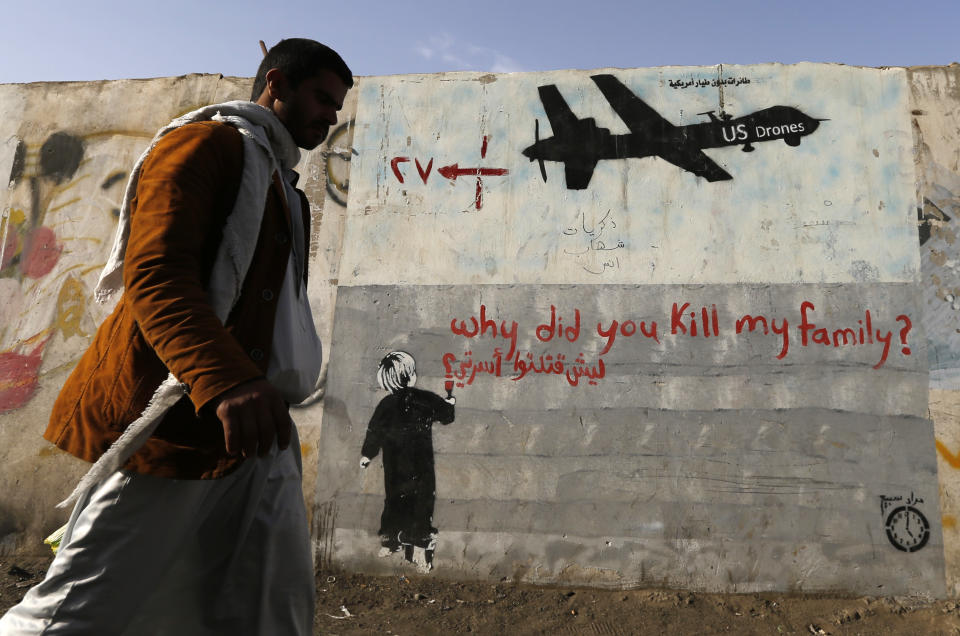
President Barack Obama was widely criticized for expanding the use of armed drones by the U.S. military. Obama authorized at least 542 strikes during his presidency, killing an estimated 3,797 people — including 324 civilians — in a counterterrorism program that began under President George W. Bush. “Obama’s drone war is a shameful part of his legacy,” proclaimed an editorial in the Washington Post. “Civilian deaths during Mr. Obama’s tenure undermined American counterterrorism operations and became a recruiting tool for more extremists,” the New York Times said.
Yet President Trump’s drone program has been even more active in his first two years as commander in chief. According to U.S. government data provided to the Daily Beast, Trump authorized 238 drone strikes in Pakistan, Somalia and Yemen through November, compared with 186 authorized by Obama during his first two years in office.
One reason for the uptick, according to the Daily Beast, is that shortly after entering office, Trump relaxed the “burden of proof” standards Obama had put in place in 2013 in order to protect civilians in drone strikes — and lowered the threshold for approving them.
Meanwhile, an article in the Atlantic argued, the Trump administration’s reluctance to share information about its drone program has left Congress, and the American public, largely in the dark.
The death toll in Puerto Rico
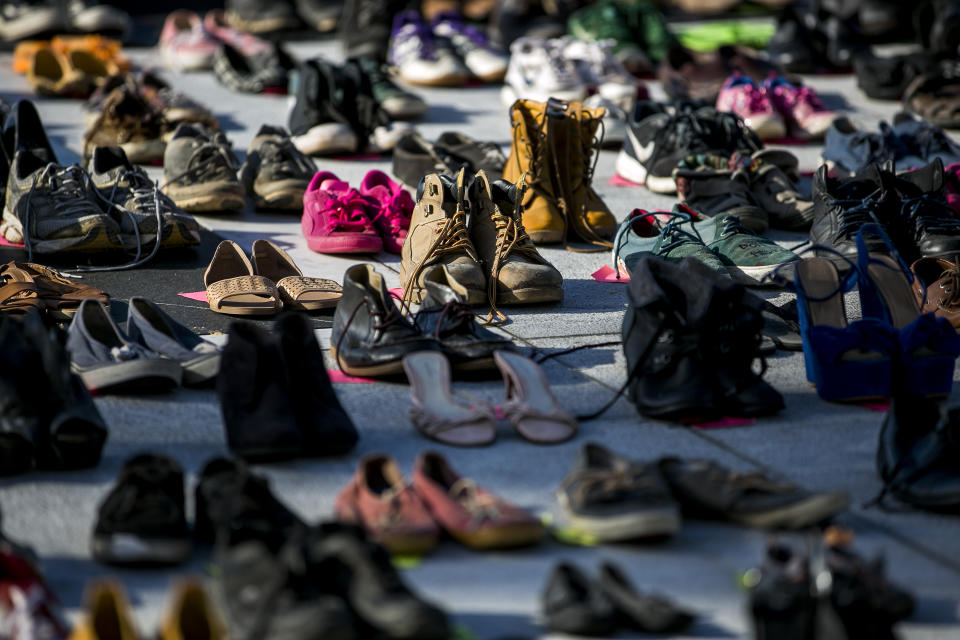
When Hurricane Maria hit Puerto Rico in late September 2017, it devastated the island, knocking out the power grid and threatening the lives of the 3 million Americans who lived there. Officials on the island pleaded for help from the federal government as reports from the ground cited hospitals without power and crowded funeral homes, implying a far greater number of dead than the official tally, which eventually reached 64. When Trump visited Puerto Rico a month later, when the death toll stood at just 16, he boasted that it was not a “real catastrophe” like 2005’s Hurricane Katrina, which killed an estimated 1,833 in the mainland United States.
But in August, a study by George Washington University and commissioned by the Puerto Rican government raised the estimated death toll for the storm and its aftermath to 2,975. A Harvard study released in May put the number at 4,645. Either university study would make Maria the deadliest natural disaster in the United States in over a century.
Trump responded to the revised death toll by floating a conspiracy theory that blamed Democrats, without evidence, for the staggering new figures.
“3000 people did not die in the two hurricanes that hit Puerto Rico,” Trump tweeted on Sept. 13. “When I left the Island, AFTER the storm had hit, they had anywhere from 6 to 18 deaths. As time went by it did not go up by much. Then, a long time later, they started to report really large numbers, like 3000.”
He added: “This was done by the Democrats in order to make me look as bad as possible when I was successfully raising Billions of Dollars to help rebuild Puerto Rico. If a person died for any reason, like old age, just add them onto the list.”
Puerto Rico Gov. Ricardo Rossello responded to Trump: “I have to say that neither the people of Puerto Rico, nor the victims, deserve their pain to be questioned.”
The police killing of Antwon Rose Jr.
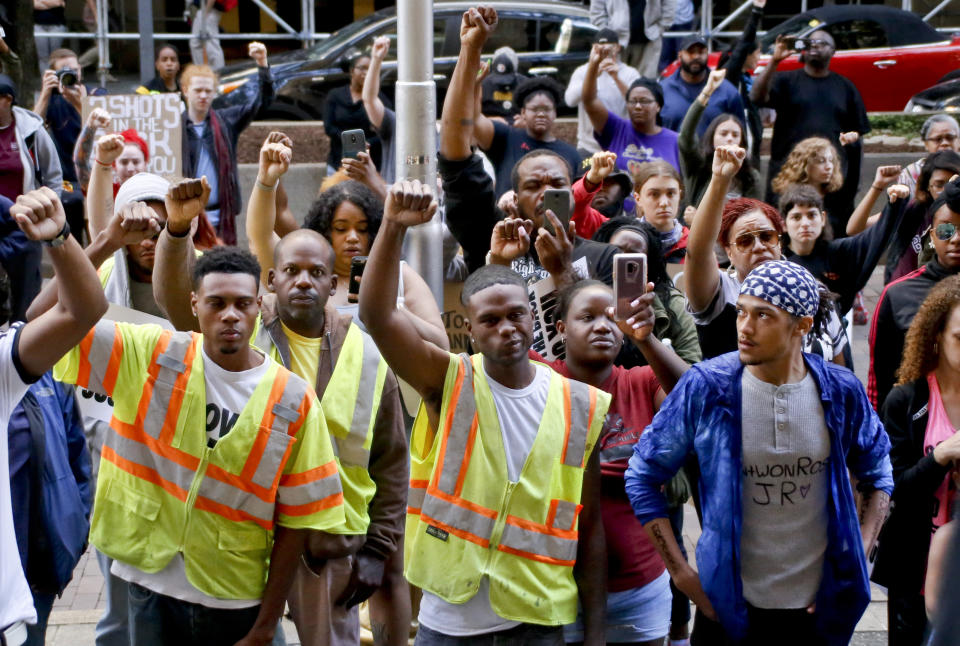
The police killing of 17-year-old Antwon Rose Jr. in East Pittsburgh on June 19 resulted in massive protests across Pittsburgh and criminal charges filed against the officer responsible. But the story did not dominate the national conversation in the way other police killings of unarmed black teenagers did.
Rose was a passenger in a car being sought in connection with a drive-by shooting. When police pulled the car over and began to arrest the driver, Rose and the other passenger took off running. Rose, who was unarmed, was shot three times, including once in the back. He died later at a local hospital. A video of the shooting was uploaded to Facebook where you can hear the woman filming ask, “Why are they shooting? All they did was run, and they’re shooting at them.”
Protests in Pittsburgh erupted for days following Rose’s death. The officer responsible for the shooting, Michael Rosfeld, was charged with criminal homicide. The district attorney said after the indictment that Rosfeld made inconsistent statements about whether or not Rose had a gun.
In August, the Rose family filed a federal wrongful death lawsuit against city officials claiming that they did not adequately train their police force.
“While this suit will never quell their tremendous grief or minimize their tragic loss,” the family’s attorney, Fred Rabner, said, “we feel that it is time that we begin to seek answers and take appropriate court action to assure justice.”
The mass shooting at Santa Fe High School
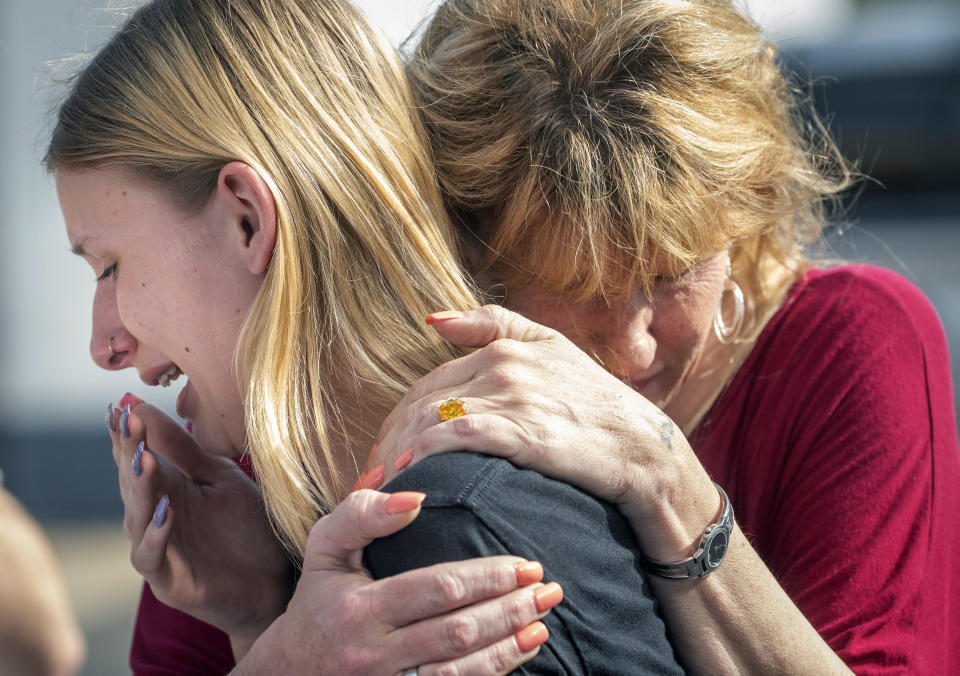
Like many recent years, 2018 was marked by a string of deadly mass shootings: In June, five people were killed in a shooting at the Capital Gazette newspaper’s offices in Annapolis, Md.; in October, 11 people were killed by a gunman at a synagogue in Pittsburgh; in November, 13 people were killed, including a police officer, and more than a dozen others injured at a country music night at a bar in Thousand Oaks, Calif; and most famously, in February, 17 people were killed in a shooting at Marjory Stoneman Douglas High School in Parkland, Fla. Within hours of the massacre, Marjory Stoneman Douglas students mobilized, organizing the March for Our Lives group to end gun violence and leading the massive demonstration in Washington, D.C., a month later.
Which might explain why the deadly shooting at Santa Fe High School in Texas on May 18 was largely overlooked. Ten people — including eight students and two teachers — were killed and 13 others were wounded in the attack, carried out, police said, by a 17-year-old male student, who surrendered to police and was taken into custody.
School shootings have become so common in the United States that one Santa Fe High student, Paige Curry, was not surprised there was one at her school. In fact, she was expecting it.
“It’s been happening everywhere,” she told reporters. “I’ve always kind of felt like eventually it was going to happen here too.”
According to the Naval Postgraduate School’s Center for Homeland Defense and Security, there were a record 94 gun-related incidents on K-12 school campuses in 2018 — the most since at least 1970, when the group first began tracking such data, and more than the numbers in 2017 (43) and 2016 (45) combined.
The dire warnings about climate change
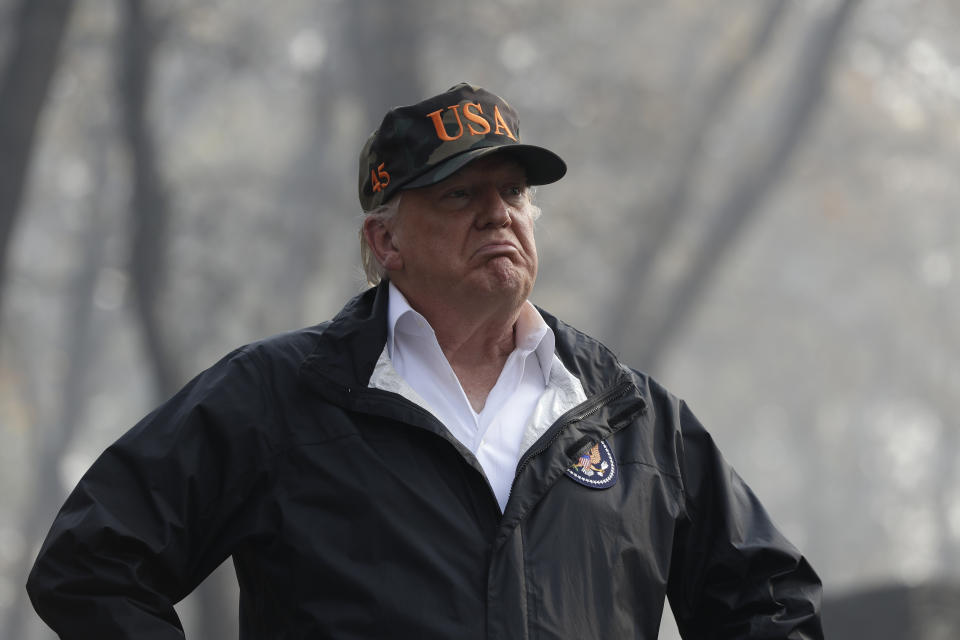
It’s weird to think of climate change as an overlooked story in a year that saw the deadliest wildfire in California history, the deadliest wildfire in Europe since 1900, record high temperatures set from Los Angeles to Glasgow and the world’s oldest and thickest Arctic sea ice pack break apart. But in many ways, it was. And given the Trump administration’s reluctance to accept its own scientists’ dire forecast, climate change seems likely to remain an unaddressed issue.
In October, the United States, Saudi Arabia, Kuwait and Russia — four of the world’s major oil producers — refused to endorse a United Nations climate change report that called for an immediate reduction in fossil fuel use. “The United States has an abundance of natural resources and is not going to keep them in the ground,” said Wells Griffith, Trump’s international energy and climate adviser. “We strongly believe that no country should have to sacrifice their economic prosperity or energy security in pursuit of environmental sustainability.”
Then came the U.S. government’s 1,600-page National Climate Assessment, released the day after Thanksgiving, which concluded that the impacts of climate change (more frequent and more powerful storms, wildfires, droughts and flooding) are already underway. “Future risks from climate change depend primarily on decisions made today,” the report stated.
The Trump administration, which has been rolling back Obama-era environmental and climate protections to the delight of the fossil fuel industry, dismissed the report, claiming its findings were “largely based on the most extreme scenario.”
It made 2018 “one of the most discouraging years in recent memory for anyone who cares about the health of the planet,” the New York Times editorial board said this week. “The administration is taking the country, and the world, backward.”
Nevertheless, climate change is increasingly a nonpartisan issue. A Monmouth University Poll published last month found that nearly 8 in 10 Americans recognize that global climate change is causing extreme weather and sea-level rise, up from 7 in 10 of those surveyed in 2015, the last time this poll was taken. And nearly two-thirds of Republicans — 64 percent — acknowledged that the world’s climate is changing — a large jump from 49 percent three years ago. The survey also found that most Americans think there’s still time to change course and prevent the more catastrophic consequences of global warming, but that they doubt the government will do anything substantive to address the issue.
The progressive initiatives passed by red states
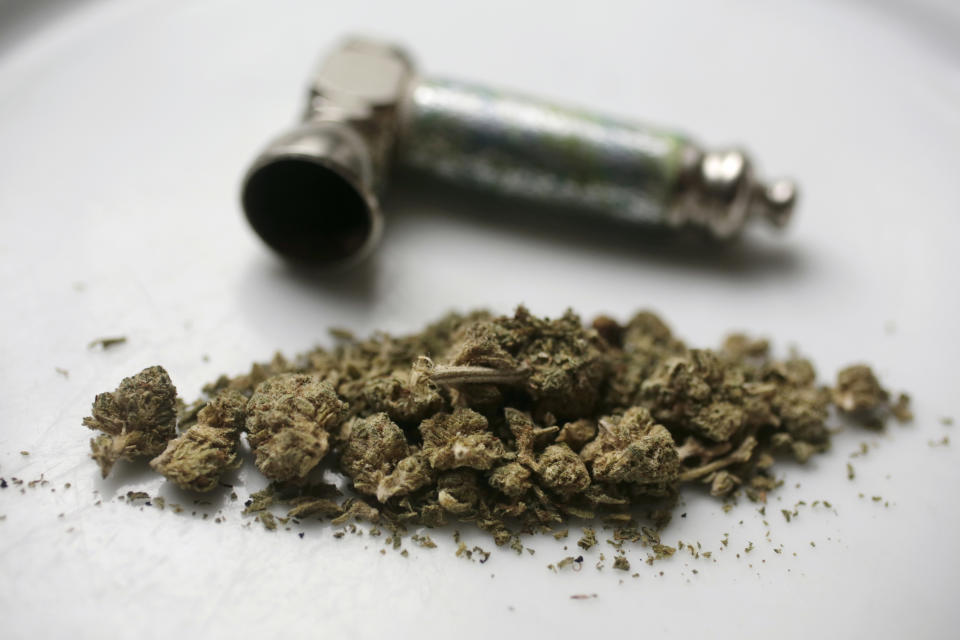
The blue wave that propelled Democrats to regain control of the U.S. House of Representatives in November’s midterm elections was widely dissected by the news media, in part, because of Trump’s insistence that Republicans defied history by maintaining control of the Senate while “significantly beating expectations in the House.” (He declared it “very close to a complete victory.”)
Less attention was paid to the ballot initiatives in traditionally conservative states that advanced progressive measures: raising the minimum wage, decriminalizing marijuana, expanding ballot access and increasing access to Medicaid.
Voters in Idaho, Utah and Nebraska approved initiatives to accept the federal subsidies to expand Medicaid to families with incomes up to 33 percent above the poverty line.
In Michigan, voters said yes to legalizing marijuana for recreational use, making it the first state in the Midwest to do so and the 10th overall. In Missouri and Utah, ballot initiatives passed allowing the use of medical marijuana, joining 31 other states.
In Arkansas and Missouri, initiatives to raise the minimum wage passed by overwhelming margins, each with over 60 percent of the vote.
Voting rights were also a major issue in the midterms. In Maryland, an initiative for same-day voter registration won. In Nevada, voters passed automatic voter registration at the DMV. In Michigan, two-thirds of voters supported a proposal that granted a number of voting right expansions, including both same-day and automatic voter registration.
And in Florida, voters overwhelmingly approved Amendment Four, restoring voting rights to felons who have completed their sentences. The measure required at least 60 percent to pass; it was approved by 64 to 35 percent. It will affect 1.5 million convicted felons, including 10 percent of the voting-age population and nearly 1 in 5 African-Americans, changing the makeup of the electorate in a state where elections are often decided by fractions of a point — including the Senate and governor’s races this year.
The White House connection to Jeffrey Epstein
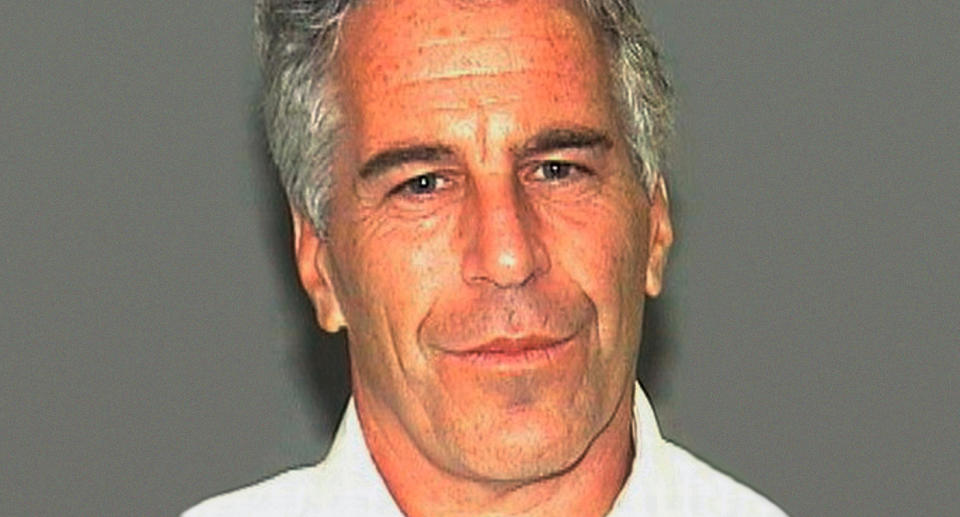
There have been so many scandals in the Trump White House that even one involving a convicted sex felon and a current member of Trump’s Cabinet flew under the radar. In December, the Miami Herald published an investigation of the case of Jeffrey Epstein, an eccentric hedge fund manager who investigators said cultivated a “network of underage girls” who would perform sex acts for him and others in his mansion in West Palm Beach.
The paper reported that after his arrest by the FBI, federal prosecutors in Miami cut an extraordinary plea agreement that allowed him to plead guilty to two state prostitution charges and serve just 13 months in county jail, with daily work-release privileges. He could have faced up to life in prison if he had been convicted on federal charges.
Epstein, whose prominent friends included former President Bill Clinton, Donald Trump and Harvard Law professor Alan Dershowitz, was given what the paper described as extraordinary leniency by then Miami U.S. Attorney Alexander Acosta, who went on to serve as secretary of labor in the Trump administration. (He is still in office.) According to the Herald, the nonprosecution agreement “essentially shut down an ongoing FBI probe into whether there were more victims and other powerful people who took part in Epstein’s sex crimes.”
Following the newspaper’s bombshell report, 15 Democratic members of Congress called on the Department of Justice to launch an investigation into Acosta’s handling of the case. Separately, Sen. Ben Sasse, R.-Neb., sent a letter to the DOJ demanding to know why Acosta agreed to such a “sweetheart deal.”
Acosta had been a possible candidate to replace former Attorney General Jeff Sessions. But after the Herald story was published, his name was taken out of the running for the nation’s top law enforcement job.
The drop in U.S. life expectancy
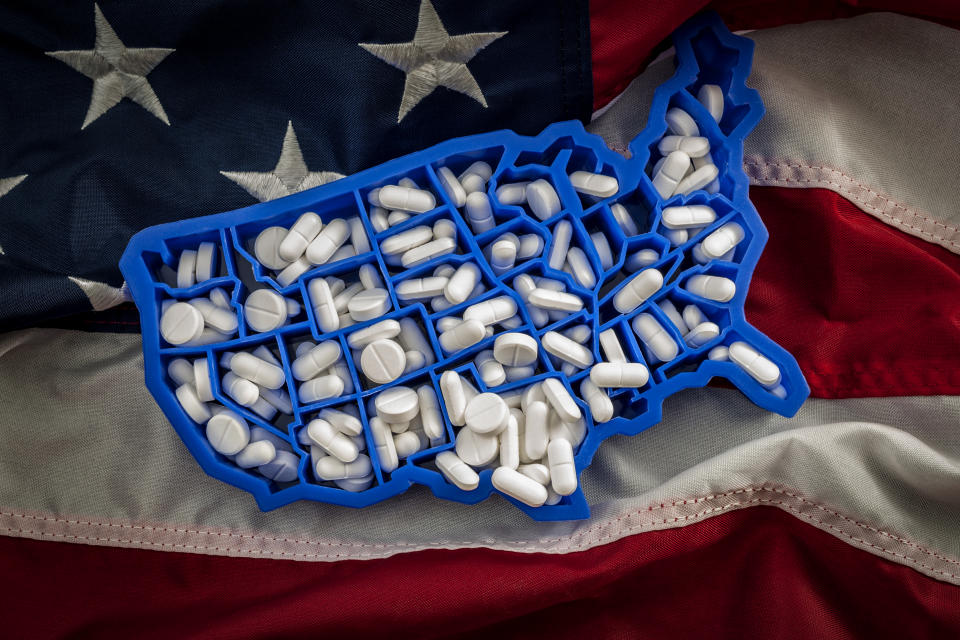
Here’s a critical story that was overlooked in the whirlwind news cycle of 2018: While human life expectancies across the world are projected to rise by an average of 4.4 years over the next two decades, the average life expectancy for American citizens declined for the third straight year.
According to annual statistics released by the Centers for Disease Control and Prevention, Americans could expect to live 78.6 years at birth in 2017, down a tenth of a year from 2016, and three-tenths from 2014.
The reason, according to health officials: drug overdoses and suicide.
The Trump administration has made fighting opioid abuse part of the president’s agenda, but the statistics released by the CDC show it’s an uphill battle.
In 2017, a record 70,237 Americans died in drug overdoses. And there was a 3.7 percent increase in the country’s suicide rate in 2017. Since 1999, the suicide rate has increased 33 percent. According to the CDC, the increases in rural counties and among middle-aged women were particularly stark.
“These sobering statistics are a wake-up call that we are losing too many Americans, too early and too often, to conditions that are preventable,” CDC Director Robert R. Redfield said in a statement. “We must all work together to reverse this trend and help ensure that all Americans live longer and healthier lives.”
Cover thumbnail photos (clockwise from top): Isaac Brekken/Getty Images, Bebeto Matthews/AP, Keith Srakocic/AP, Scott Olson/Getty Images, Robyn Beck/AFP/Getty Images, Carlos Osorio/AP, Palm Beach Sheriff’s Office/AP, Getty Images
_____
Read more from Yahoo News:




